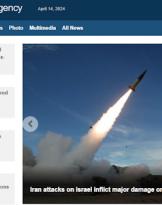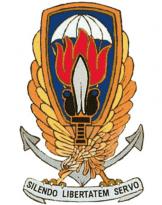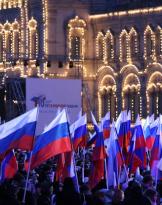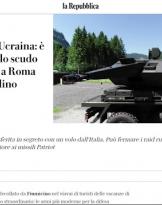Net of the "winds of war" that blow from the east, Italian public opinion is totally concentrated on the elections for the next President of the Republic. Some parliamentarians interviewed hastily recalled the possible repercussions of a possible conflict between Ukraine and the Russian Federation.
Our political class should be concerned about how our military assets are completely unprepared to deal with a high-intensity conflict, even if it occurs for a very short period of time. Above all, it would be useful to draw on sources that provide reliable information on our Armed Forces. Some points of view on Defense they are "taken to the Gospel" by certain political parties, despite the obvious inaccuracies.
According to what is reported on the site, on January 25, the Observatory on Italian Military Expenses asserts that "In the unfortunate eventuality of an armed conflict in Ukraine, Italy would find itself on the front line with its own military assets, land but above all air and naval, participating in NATO missions to protect the eastern borders of the Atlantic Alliance at an overall cost current of around 78 million euros ". A highly questionable consideration given the operational scenario that could occur.
The press release continues by describing the assets of the Air Force: “The Air Force is deploying one squadron of four Typhoon fighters (the Black Storm) and 140 men in a Romanian air base near Constanta, a stone's throw from the Ukrainian border: until April he will carry out daily patrol missions on the turbulent and crowded skies of the Black Sea ".

Four EFA-2000s with two Iris-T (short-range) missiles each seem, frankly, junk. Of course, if necessary, NATO's arsenals could be accessed, however we are talking about a small number of aircraft, without considering the few hours of flight that, generally, Italian fighter pilots have in air combat training.
The naval component is also addressed by the Observatory: "The Black Sea, together with the Eastern Mediterranean, is also the operational theater of the mission of the NATO permanent naval force in which the Navy currently participates with the frigate Fremm Carlo Margottini (opening photo) and with the minesweeper Viareggio, for a total of over 200 sailors and a cost (2021 funding) of over 17 million euros. In the eastern Mediterranean quadrant, where Moscow is currently concentrating an unprecedented fleet, in the coming weeks it will also meet the Cavour aircraft carrier with embarked F-35s, participating in a NATO exercise together with the American aircraft carrier Truman and the French Clemenceau ".
Il Margottini it has almost nonexistent anti-ship capabilities and little anti-submarine capabilities. It also has limited self-defense capabilities from missile threats, in the event of a conflict it would have little chance of staying afloat. As for the Cavour, according to this publication, it does not appear that the F-35Bs embarked on the flagship of the Italian fleet have reached, at least, the initial operational capability (scheduled for 2024).
The last part would border on the ridiculous, were it not a terribly serious subject. The Observatory comments on the terrestrial component of our Army: "In the snowy forests of Latvia, another potential hot front in the event of a military confrontation with Russia, as part of the NATO Baltic Guardian mission, the Italian Army finally deploys more than 200 Alpini of the Taurinense brigade with dozens of Centaur rotated tanks and snow tracks. They are part of a Battle Group of over 1.200 Canadian-commanded soldiers based north of Riga. The mission received over 27 million in funding in 2021 ".
 I bus them Centaur do you define "rotated tanks"? Leaving aside the Observatory's lack of understanding of the difference between an MBT and a busway (as well as the numbers of the vehicles deployed), it is good to highlight the fact that the Centaur, in an operational environment saturated with anti-tank systems (and not only), it would have zero chance of being employed. In addition, due to the region's cold temperatures, hardly any vehicle would be able to move in the event of an urgent activation. Recall that the busway B-1 Centaur it was designed in the 80s of the last century as a chariot hunter (replacing the old M-47) and began to flow to the departments from 1992. For thirty years it has never been updated, both in terms of armament and protection.
I bus them Centaur do you define "rotated tanks"? Leaving aside the Observatory's lack of understanding of the difference between an MBT and a busway (as well as the numbers of the vehicles deployed), it is good to highlight the fact that the Centaur, in an operational environment saturated with anti-tank systems (and not only), it would have zero chance of being employed. In addition, due to the region's cold temperatures, hardly any vehicle would be able to move in the event of an urgent activation. Recall that the busway B-1 Centaur it was designed in the 80s of the last century as a chariot hunter (replacing the old M-47) and began to flow to the departments from 1992. For thirty years it has never been updated, both in terms of armament and protection.
On the situation of the heavy component (brigades Ram e Garibaldi) let's be silent for the sake of country.
After decades of complete disinterest (and of very crazy initial choices), i C-1 wagons Ram still operational would be just over thirty. However, we are talking about MBTs which are absolutely inadequate to deal with an operational scenario such as the Ukrainian one; with regards to i Dart, on the other hand, the numerical situation is slightly better but the means are equally inadequate.
The only vehicle at the height would be the 2000/155 mm German PZH-52 self-propelled machine (68 specimens), a modern system capable of delivering a considerable volume of fire at moon range (with the new ammunition Volcano the operating arm exceeds 70 km).
Politics should address the problem! Could a heavy terrestrial pole between OTO-Melara and Rheinmetall Italia, in order to convey their respective skills in the construction of modern vehicles (MBT, IFV), able to operate in less permissive environments, could be a solution?
In conclusion, the examination of the Observatory on Italian Military Expenses has served more than anything else to highlight the total inadequacy of the national military apparatus in a context of high intensity (even if it had been medium the situation would not have improved). Therefore, should the situation in the Donbass worsen, it would be appropriate to align with the policy of the Croats, or - in the event of a war between Russia and Ukraine - Zagreb will withdraw its troops from the region.
Photo: Navy / Air Force / Italian Army












